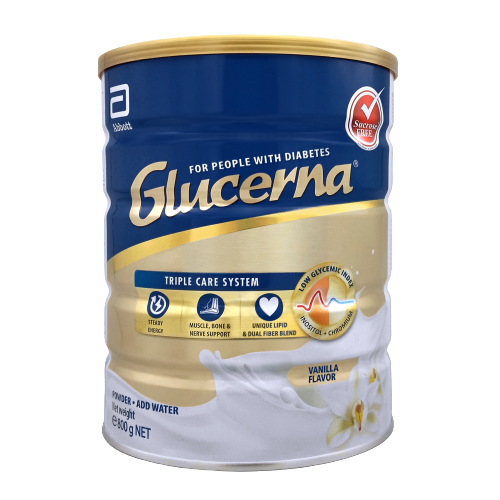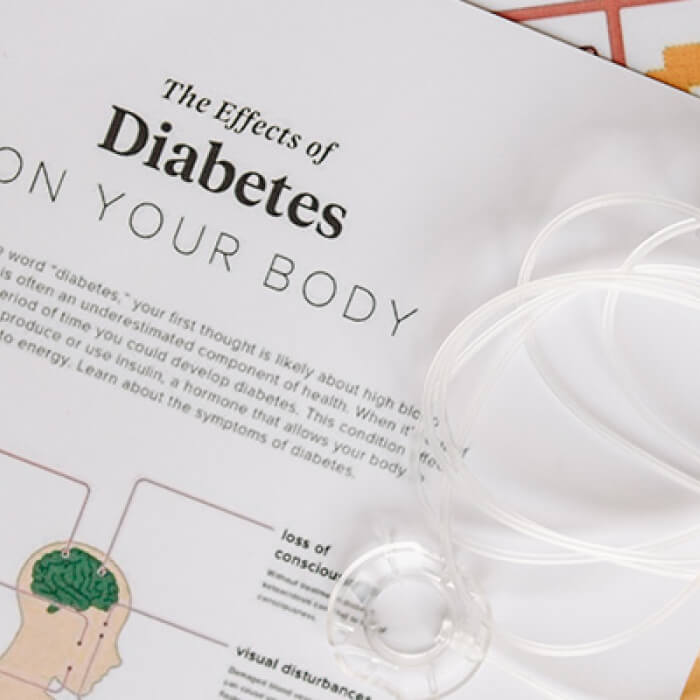Glucerna triple care
- Main Image
-

- Subtitle
- Complete and Balanced Nutrition For People with Diabetes
- Title
- Glucerna® Triple Care
- Detail Page Path
It can be hard to keep a healthy diet when experiencing Diabetes Burnout. Diabetes Burnout is a natural and rational response to living with this demanding, long-term condition. It affects 44% of people diagnosed with diabetes, and they have been consistently linked with higher HbA1c levels.
Symptoms2 can include:
Every food choice you make has the potential to send your blood glucose soaring, some more than others. Selecting the right foods in the right portion at every meal and snack is fundamental to good control. So, no matter how many years you have had diabetes, you need to get the diet basics right. Start now.
Start getting your foundations right by reading the tips below:
No two people with diabetes eat the same way, everyone responds to food differently. So, ask your doctor for a referral to a dietitian. A dietitian is the ONLY qualified expert to provide guidance on diabetic diets. Your dietitian will educate you on essential diet fundamentals, and work with you to personalise your eating plan to suit your lifestyle, personal eating preferences, and the state of your health so you can sustain the changes and achieve good glucose control. Remember that your body’s ability to manage blood glucose will diminish over time. So, do attend planned follow-up sessions to tweak the plan along the way.
A healthy and well-balanced diet is what everyone needs to eat each day to meet daily nutritional goals and stay energised. So do people battling with diabetes. Designed by the Health Promotion Board, My Healthy Plate can help everyone get the proportion of food from each food group right at each main meal. There’s more to the recommendation than the plate infographic. Study the accompanying resources in detail to get very familiar with the basic food groups, number of servings recommended each day, as well as the quantity of each food item that makes up a serving. Knowledge is power. Once you know it well, then plating up a well-balanced meal becomes easier whether you eat at home, a restaurant or a hawker stall.
Carbohydrates (carbs in short) raise blood glucose more than protein or fat. You need to include carbs in your daily diet to stave off blood glucose lows as well as to ensure you are not overeating proteins or fats. Keep ‘added sugar’ to a minimum as it can cause sugar spikes, and use up precious calories without delivering any essential vitamin, mineral or fibre. But, not all carbs are evil. Every main meal and snack should include some starchy carbs, preferably of the wholegrain variety, as they provide energy for daily tasks, but the quantity at each meal and snack needs to be adjusted and spaced through the day to suit your lifestyle and medications to achieve glucose control.
All carbs are not the same. So, while counting carbohydrates is one way to get very basic control of your diet or to estimate your insulin jab dose (for patients who use insulin only), you may be surprised to know that by exchanging equal portions of carbs from different foods, you will get very different blood glucose results. Low GI foods are food items or meals that cause lower blood sugar surges that are sustained for longer periods compared to High GI foods. For example, replacing white rice with a low GI rice portion may give you better glycemic results. Some food items at the supermarket are labelled as ‘Low GI’, and they can be a part of your regular shopping basket. To learn more and find out the GI of other foods, you can visit the Home of Glycemic Index.
Take charge of your diabetes. Don’t make it just your doctor’s problem. To sustain essential lifestyle changes, keep on learning, keep on asking questions and always evaluate your treatment and progress. Monitor key health parameters such as weight, blood glucose, blood pressure and blood lipids. While most of these can be effectively done at your medical reviews, consider including more frequent self-blood glucose monitoring to provide immediate feedback. With wearable technology easily available, blood glucose feedback may help you stay in the know. Knowing how your body responds to foods, meals and snacks will help you make better choices and control portions.
Speak up to your healthcare team and family when you feel upset and angry about the demands diabetes is placing on your food choices and lifestyle. It is natural to feel upset about diabetes. But, never give up, rework your goals, and allow for some balance. Small wins each day are better than completely rejecting all dietary guidance.
Eating healthy and well-balanced meals and snacks that are carbs controlled and made up of low GI foods is the right way to get your diabetic diet on track, and enjoy and sustain it over time. However, if you are not able to figure out the details or put the instructions to practice daily, and are struggling with blood glucose highs and lows, a diabetes-specific formula as part of your individualised meal plan may help you achieve better glycemic control with greater convenience and confidence.
Designed for people with diabetes, diabetes-specific formulas deliver complete and balanced nutrition, and are scientifically designed with slowly absorbed carbohydrates to be low GI as well. Here’s how you may include it in your individualised meal plan:
REFERENCES
1 Source: HPB’s ‘Energy & Nutrient Composition of Food’ website
2 Source: Accessed on 23 November 2019 at https://www.diabetes.org.uk/Guide-to-diabetes/Life-with-diabetes/Diabetes-burnout
SG.2022.29988.GLU.1 (V1.1)

Unlike the flu or an episode of fever, diabetes does not go away. Every food choice matters. Learn about mindful eating to be prepared for the long run.

Fluctuations in blood glucose levels may contribute to fatigue in people with diabetes. Find out what you can do to help maintain steady energy through the day.

Diabetes burnout is a natural and rational response to living with the demanding, long-term condition of diabetes.

Are you finding it difficult to cope with diabetes burnout? Find out how to be in control of your Type 2 Diabetes.
You are about to exit for another Abbott country or region specific website.
Please be aware that the website you have requested is intended for the residents of a particular country or region, as noted on that site. As a result, the site may contain information on pharmaceuticals, medical devices and other products or uses of those products that are not approved in other countries or regions.
The website you have requested also may not be optimized for your specific screen size.
Do you wish to continue and exit this website?